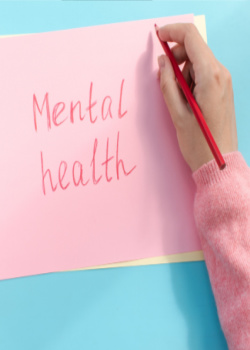50 Suicide Prevention Resources
Suicide is a leading cause of death in the United States. The Centers for Disease Control and Prevention (CDC) reported that nearly 50,000 people die by suicide annually.1 The impacts are far reaching, causing pain to families, communities, and the nation as a whole. Following is our comprehensive list of suicide prevention resources and strategies meant to support those impacted by this heartbreaking epidemic and to prevent further incidences of suicide.
What’s particularly tragic about suicide is that it is preventable. There have been tremendous efforts by suicide prevention and advocacy organizations to work with communities and families to provide free mental health resources, a place to be heard, and feelings of support that reinforce suicide isn’t a person’s only option.
Suicide Statistics in the U.S.
CDC statistics from 2020 show the following:2
- Suicide rates had increase 30 percent since the year 2000
- There were 46,000 suicide deaths
- 1 person dies by suicide every 11 minutes
- 2 million adults seriously considered suicide
- 2 million people planned to take their life
- 2 million Americans attempted suicide
- 90 percent of those who survive a suicide attempt do not later die by suicide
The Effects of Suicide
There are broader effects of suicide, affecting the person if they survive, their families, friends, romantic partners, communities, employers, co-workers, and the even the economy.
According to the CDC suicide has the following impacts:1
- Physical Effects: a person who survives suicide may sustain serious injuries that could impact their health in the longer term.
- Emotional Effects: Those impacted by suicide experience a range of emotions, including grief and loss, shock, anger, anxiety, guilt, and depression. Experiencing suicide also increases an individual’s risk of taking their life by suicide.
- Economic Effects: Suicide attempts cost the US $490 billion annually, in medical fees, quality of life costs, and lost business revenue.
College Student Suicide Statistics
 According to the Suicide Prevention Resource Center, suicide is a leading cause of death among college students nationally. Key facts about suicide among college-aged students show:4
According to the Suicide Prevention Resource Center, suicide is a leading cause of death among college students nationally. Key facts about suicide among college-aged students show:4
- 7 percent of students seriously considered suicide
- 3 percent of college students made a suicide plan
- 2 percent of students attempted suicide
Risk factors associated with suicide among college students include:
- Substance abuse and addiction
- Persistent physical illness
- A lack of coping skills
- Mental health disorders, including anxiety, depression, or self-harm
- Feelings of hopelessness or loneliness
- Risky behaviors, like having unprotected sex or driving while intoxicated
- Relationship issues
- Limited access to healthcare and behavioral healthcare
- Difficulty sleeping
- Experiencing stigma associated with getting and receiving mental health support
- Access to firearms
- Different types of abuse (Physical, sexual, or psychological)
- Academic problems
- Work troubles
- High levels of stress
- Problems at home, like mental health disorders or substance use problems
- Lack of social and familial support
- Bullying, discrimination, or racism.
Research shows that, the more risk factors a person experiences, the more likely the incidence of suicide.
Protective Factors for Students
There are a number of conditions (also called protective factors) that may reduce the chances of a student feeling like suicide is their only option. These protective factors include access to mental health support, strong social support networks, close relationships with teachers, being part of a community, and having strong problem-solving skills.
Suicide Statistics Among Different Minority Groups

Unfortunately, research shows that some populations experience higher rates of suicide than others, according to the CDC. High risk groups typically include those who hold a minority identity, such as:3
- People with disabilities
- LGBTQ Youth
- Tribal populations
There are also other disparities among those who live in certain geographic locations, people who work in occupations, and certain age groups. The next few pages illustrate how suicide statistics differ among these different populations.
Suicide Rates by Disabilities
Adults with disabilities are three times more likely to report suicidal thoughts than people without disabilities, according to the CDC.3 Research also suggests that people with disabilities report experiencing increased mental distress.5
That’s why the CDC is working with states considered high-risk, like Vermont, to reduce suicides deaths by limiting firearm access and increasing gun safety, increasing social and community supports, and improving access to mental health resources. Prevention efforts also include strengthening delivery of healthcare and behavioral healthcare in communities.
Suicide in LGBTQIA Communities
Data from the CDC shows that rates of suicide are higher in the LGBTQIA population.3 One contributing factor may be that people who identify as a sexual and/or gender minority also experience higher rates of substance use disorder, affecting up to 30 percent of this population. There are also higher levels of substance use and misuse among LGBTQ people because many social activities are centered around drinking and bars. Another factor is that alcohol companies market this segment specifically by placing gay pride flags on their products to show support for the community.
Other suicide risk factors for LGBTQ folks are that this community experiences
- Higher levels of discrimination and mistreatment because of gender identity and sexual orientation
- Increased rates of mental health disorders, such as anxiety and/or depression
- Less access to healthcare and mental health resources and discrimination from healthcare providers.
Youth LGBTQIA Suicide Stats
According to the Trevor Project — a national suicide prevention LGBTQ nonprofit dedicated to young people — a staggering 1.8 million LGBTQ youth seriously considers suicide each year and at least one attempts suicide every 45 seconds. Researchers at The Trevor Project published the following LGBTQ suicide facts:6
- 45 percent of LGBTQ youth had considered attempting suicide in the last year, which included more than half of transgender and nonbinary youth
- Black transgender and nonbinary youth experience disproportionate risks of suicide with as many as 59 percent seriously considering suicide and 26 percent attempting suicide in the last year
- LGBTQ youth of color reported the highest rates of attempted suicide in the last year, including:
- 21 percent of Native/Indigenous youth
- 19 percent of Middle Eastern/Northern African youth
- 17 percent of multiracial youth
- 16 percent Latinx youth
- 12 percent of Asian/Pacific Islander youth
- Those at the highest risk of suicide are Two-Spirit youths who were 2.5 times more likely to report suicide attempt in the last year, compared to LGBT peers.
- Almost 50 percent of bisexual youth had seriously considered attempting suicide in the past year, and 27 percent attempted suicide (compared to 14 percent of heterosexual youth considering suicide and 6 percent attempting suicide).
There are several factors contributing to youth LGBTQIA+ suicide, such as: 6
- Higher levels of victimization and bullying, discrimination, and rejection among friends, family, and even healthcare providers
- The stress of holding a sexual minority identity
- Lack of social support
- Limited access to gender and sexuality-affirming spaces, including medical and behavioral healthcare
- Being sent for conversion therapy and other religiously traumatizing practices
- Identifying as transgender. (Research shows that transgender and nonbinary youth were up to 2.5 times more likely to experience depressive symptoms, seriously consider suicide, and attempt suicide in comparison to cisgender LGBQ population.7
Suicide By Age Group
The CDC found that middle-aged adults, older adults, and youth are the highest risk age groups for suicide, broken down as follows:3
- 2 percent were middle-aged adults aged 35 to 64. Within this age group, suicide was higher among non-Hispanic American Indian or Alaskan Native men. Followed by white women, who were the second highest group of middle-aged people experiencing suicide
- 14 percent of suicides are among people aged 10 to 24. Other key statistics in this age group:
- Youth have higher rates of emergency room visits for self-harm, accounting for 217,447 ER visits annually
- Suicide is the second leading cause of death In the age group 10 to 14
- Reports of suicide attempts were higher among young girls and ER visits from young females have doubled in the last 20 years
- Native American youth also had higher rates of reported suicide attempts.
- 10 percent of all suicides were adults aged 75 or older. However, men over the age of 75 have the highest rate of suicide compared to other age groups.
Suicide By Racial & Ethnic Groups
The CDC data shows the following rates of suicide per 100,000 population by racial and ethnic minority groups:
| Ethnicity | Men Rates per 100,000 People |
Women Rates per 100,000 People |
|---|---|---|
| Non-Hispanic American Indian/Alaskan Native | 36 percent | 11.7 percent |
| Non-Hispanic White Americans | 27.2 percent | 6.9 percent |
| Non-Hispanic Native Hawaiian or Other Pacific Islander | 20 percent | *No information available by the CDC |
| Non-Hispanic Multiracial | 14.5 percent | 5 percent |
| Non-Hispanic Black | 13.1 percent | 2.9 percent |
| Non-Hispanic Asian | 9.5 percent | 3.7 percent |
| Hispanic White | 13.1 percent | 3.0 |
| Hispanic Asian | 9.6 percent | *No information available by the CDC |
| Hispanic Multiracial | 7.9 percent | 3.1 percent |
| Hispanic Black | 4.6 percent | 1.8 percent |
| Hispanic American Indian/Alaskan Native | 2.9 percent | *No information available by the CDC |
Data from the CDC also shows that certain racial groups experience higher rates of substance misuse. For example:3
- Asian Americans: 8 percent of Asian Americans have substance use disorder, compared to 7.4 percent of the total population, and 6 percent have an illicit drug disorder compared to 3.2 percent of the total population.
- BIPOC (Black, Indigenous, and People of Color): 1 in 5 BIPOC experience mental health disorders, and some groups experience higher rates of addiction.
- Native Americans: Due to historical atrocities, this population experiences:
- Suicide as the leading cause of death among American Indian/Alaskan Native people aged between 10 and 34
- Higher rates of post-traumatic stress disorder (PTSD), domestic violence, and mental health disorders (including substance use disorder
- Suicidal ideation, with approximately 35 percent of children aged 9 to 12 reporting suicidal thoughts
Veteran Suicide Stats
There have been higher rates of suicide among veterans than non-veterans (civilians), due to the extreme stress and trauma of combat. Veterans experience suicide at a rate 52 percent greater than civilians. This is also attributed to higher rates of substance use, and mental health disorders, like PTSD.
Key veteran suicide data from the CDC shows:3
- 1 in 10 veterans returning from active duty in Iraq and Afghanistan misused drugs or alcohol
- More than 10 percent of US veterans have substance use disorder
- 20 percent of veterans who served in Iraq or Afghanistan struggle with depression or PTSD
- 33 percent of veterans seeking treatment for substance use disorders also have PTSD
Suicide Rates By Population Density
Living in rural areas or tribal community increase risk of suicide. According to the CDC, suicide rates increase as population density decreases, as follows:3
- 5 percent in a rural area
- 3 percent in a non-metropolitan area
- 2 percent in a small metropolitan area
- 3 percent in a medium metropolitan area
- 5 percent in a large fringe metropolitan area
- 9 percent in a large metropolitan area
Like other rates of suicide and groupings, race, and ethnicity are contributing factors. In rural areas, for example, suicide is highest among non-Hispanic Asian American males (59.6 per 100,000) and non-Hispanic white males (37.9 per 100,000).
Suicide Stats by State
According to the CDC, states with the highest suicide rates were:8
- Wyoming (32 percent per 100,000)
- Alaska (28 percent per 100,000)
- Montana (26 percent per 100,000)
- New Mexico (24 percent per 100,000)
- Idaho (23 percent per 100,000)
CDC suicide data for all states:8
| STATE | RATE | DEATHS |
|---|---|---|
| Alabama | 16 | 793 |
| Alaska | 27.5 | 204 |
| Arizona | 17.6 | 1363 |
| Arkansas | 19 | 583 |
| California | 10 | 4144 |
| Colorado | 21.5 | 1302 |
| Connecticut | 9.3 | 364 |
| Delaware | 12.3 | 124 |
| Florida | 13.2 | 3135 |
| Georgia | 13.7 | 1491 |
| Hawaii | 12.9 | 184 |
| Idaho | 23.2 | 419 |
| Illinois | 10.5 | 1362 |
| Indiana | 15 | 1024 |
| Iowa | 18 | 552 |
| Kansas | 18.4 | 531 |
| Kentucky | 17.7 | 801 |
| Louisiana | 13.7 | 642 |
| Maine | 16.4 | 234 |
| Maryland | 9.2 | 585 |
| Massachusetts | 8.4 | 618 |
| Michigan | 14 | 1444 |
| Minnesota | 13.1 | 758 |
| Mississippi | 13.9 | 410 |
| Missouri | 18.2 | 1125 |
| Montana | 26.1 | 300 |
| New England | 14.9 | 283 |
| Nevada | 18.2 | 603 |
| New Hampshire | 16.4 | 234 |
| New Jersey | 7.1 | 679 |
| New Mexico | 24.2 | 516 |
| New York | 8 | 1642 |
| North Carolina | 13.2 | 1441 |
| North Dakota | 18.2 | 135 |
| Ohio | 13.8 | 1644 |
| Oklahoma | 21.9 | 869 |
| Oregon | 18.3 | 833 |
| Pennsylvania | 12.6 | 1694 |
| Rhode Island | 8.5 | 94 |
| South Carolina | 16.3 | 868 |
| South Dakota | 21 | 186 |
| Tennessee | 17.2 | 1220 |
| Texas | 13.3 | 3924 |
| Utah | 20.8 | 651 |
| Vermont | 18.1 | 117 |
| Virginia | 13.5 | 1202 |
| Washington | 15.2 | 1212 |
| West Virginia | 19.4 | 354 |
| Wisconsin | 14.5 | 866 |
| Wyoming | 30.5 | 182 |
Source: https://wonder.cdc.gov
Suicide Rates by Occupation
Occupation, or job role and industry, are a contributing risk factor for suicide. Suicide rates are higher among males working in mining, quarrying, oil and gas extraction, and construction work, as indicated in the CDC data table, below.9
| Industry | Men Suicide Rates per 100,000 People |
Women Suicide Rates per 100,000 People |
|---|---|---|
| Mining, quarrying, oil, and gas extraction | 54.2 percent | No data available |
| Construction and Extraction | 49.4 percent | 25.5 percent |
| Agriculture, fishing, forestry, and hunting | 36.1 percent | No data available |
| Transportation and Material Moving | 30.4 percent | 12.5 percent |
| Transportation and Warehousing | 29.8 percent | 10.1 percent |
| Other manual services, like mechanics | 39.1 percent | No data available |
| Installation, Maintenance and Repair | 36.9 percent | No data available |
| Protective Services | No data available | 14 percent |
| Healthcare Support | No data available | 10.6 percent |
Like other high risk population groups, this data helps agencies like the CDC to certain industries in suicide prevention programming. Many states have identified high risk groups and sought to support them by providing employers and providers with suicide education, introducing peer support programs, and improving access to healthcare and behavioral health resources.
Suicide Warning Signs

According to the National Institutes on Mental Health, there are warning signs to watch out for in yourself or someone you know that might be contemplating suicide:10
- Feelings: watch out for feelings of sadness, emptiness, hopelessness, depression, agitation, anxiousness, unbearable emotional or physical pain, or feeling like there is no reason to continue living.
- Talking about death: a person may say they want to die or want to stop the pain of living. People experiencing suicidal ideation may also express that they feel like a burden to others, or they may talk about suicide as revenge.
- Changes to behavior:
- Thinking about death frequently
- Using drugs or alcohol more often
- Researching ways to die
- Extreme mood swings
- Engaging in risky behavior like, driving dangerously, or drinking and driving
- Difficulty sleeping, or sleeping all the time
- Making a suicide plan
- Showing rage
- Socially withdrawing
- Giving away important possessions
- Changes to appetite
- Putting affairs in order like making a will
- Saying goodbye to friends or family
These are signs of a person experiencing high levels of emotional stress and should indicate the need to seek immediate help.
In the next few sections of this guide, you’ll find ways to support yourself or a loved one at risk of suicide, along with resources you can connect with in order to provide assistance.
Suicide Risk Factors
Data shows that living in a certain location, identifying as a racial, sexual, or gender minority and certain occupations, geographic locations, increases risk of suicide. In addition to demographic risks, there are other risk factors for suicide, such as:10
- Having a mental health disorder, like depression or substance use disorder
- Experiencing chronic pain or physical illness
- A family history of mental health disorders or substance use/addiction, or suicide
- Witnessing or being the victim of physical, sexual, or emotional violence at home
- Substance misuse
- Recent release from incarceration
- Easy access to lethal means (firearms)
- Exposure to suicidal behavior among peers
- Stressful life events, like grief and loss, legal problems, the end of a romantic relationship, losing a job, and financial difficulties
Identifying Someone at Risk for Suicide
Medical providers and emergency departments have access to screening tools, which assess a person’s risk for suicide, such as:
- Ask Suicide-Screening Questions (ASK) Toolkit
- Columbia Suicide Severity Rating Scale (C-SSRS)
- Patient Safety Screen (PSS-3)
- Patient Health Questionnaire (PHQ-9)
- Suicide Assessment Five-Step Evaluation and Triage (SAFE-T).
Screening is paramount to suicide prevention; research shows it can double the number of patients identified as being at risk. Screening tools ask questions like:
- In the past few weeks have you had little interest or pleasure in doing things?
- In the past few weeks, have you felt that you and your family would be better off if you were dead?
- In the past few weeks have you wished you were dead?
- Have you had thoughts of killing yourself in the last week?
- Have you thought about how you might do this?
- Have you had these thoughts and had the intention of acting on them?
- Have you done anything or made any preparations to end your life? What are those plans?
- Have you ever tried to kill yourself?
Some organizations, like the VA, have partnered with the National Institute on Mental Health to identify veterans at risk through screening electronic records. This helps the VA to provide connect veterans with resources and ensure they have support when experiencing stress and suicidal ideation.
5 Steps to Help Someone at Risk of Suicide
There are five nationally recognized evidenced-based action steps to help someone at risk of suicide:11
- Ask them directly if they are thinking of killing themselves. Ask if they are hurt, or what is going on for them.
- Be there: listen to the person and allow them to express themselves freely. Do no judge, debate right or wrong, or lecture. Show only care, support, and listen.
- Keep them safe: it’s important to establish immediate safety by asking for more information about their plan and seeking to increase safety. This may mean making a plan to limit access to lethal means by removing firearms, even temporarily.
- Help them connect to resources: contact 988 Suicide and Crisis Lifeline if you, or someone you know, is experiencing a mental health crisis and you think they need support. Call or text 988; Chat via 988 lifeline.org; or Text 741741.
- Follow up: after you’ve connected the person with resources, stay until they have immediate assistance, and then follow up to ensure they are OK and have accessed mental health resources and support.
50 National Suicide Prevention Resources
We have compiled an extensive list of suicide prevention resources for families, youth, parents, educators, and those who have lost loved ones, are coping with loss, or seeking crisis information. You’ll find specific resources for racial, gender, and sexual minorities, too.
Crisis Lines
- Crisis Text Line:
- Text “HELLO” to 741741 for adults
- Text “Jason” to 741741 for youth
- Trevor Lifeline for LGBTQ youth:
- Call 1-866-488-7386
- Text “START” to 678678
- Online peer community in TrevorSpace
- National Suicide Prevention Lifeline: call 1-800-273-TALK or chat
- SAMHSA Suicide and Crisis Lifeline: chat with a trained counselor for free, 24/7/365
- Call or text 988
- Chat or visit 988lifeline.org
- Trans Lifeline for trans lives in crisis. Call 877-565-8860
- Veterans Crisis Line connects service members and veterans in crisis
- Dial 1-800-273-8255 and press 1
- Text 838255 to connect with a VA responder
- Veterans Crisis Chat line, visit: https://www.veteranscrisisline.net/get-help-now/chat/
LGBTQIA+ Suicide Resources
- American Foundation for Suicide Prevention: a national not-for-profit organization committed to understanding and preventing suicide through education, research, and advocacy
- LGBTQ+ Addiction and Mental Health Support Resources, including: LGBTQ+ suicide prevention and support services
- Gay and Lesbian Medical Association Provider Directory: for LGBTQ people to find LGBTQ affirming providers
- The Trevor Project: Confidential support for LGBTQ+ youth in crisis, 24 hours a day, 7 days a week.
- TrevorLifeline 866-4-U-TREVOR (1-866-488-7386): Crisis intervention and suicide prevention phone service available 24/7/365
- TrevorChat: Confidential online instant messaging with a Trevor counselor, available 24/7. Access via computer.
- TrevorText – Text START to 678-678: Confidential text messaging with a Trevor counselor, available 24/7/365. Standard messaging rates may apply.
- LGBTQ-affirming therapy: information and resources from Mental Health America, including the Healthcare Equality Index
- Parents, Families, Friends, and Allies United with LGBTQ People: national resources for LGBTQ people and their loved ones
- SAGE LGBT Elder Hotline: For older members of the LGBTQ community who can chat with friendly responders. Confidential support and crisis response available 24/7. Call 1-877-360-LGBT (5428).
BIPOC Suicide Resources
- AAKOMA Project: provides diverse teens and families with mental health resources
- Asian American Pacific Islander Mental Health Resources: 45 mental health resources for Asian Americans and Pacific Islanders
- BIPOC Addiction and Mental Health Resources: resources for people of color struggling with substances and/or mental health
- National Organization for People of Color Against Suicide: a nonprofit dedicated to BIPOC suicide prevention
- Native American Substance Abuse and Mental Health Resources: 101 resources for Native Americans on substance use disorder treatment and mental health
- National Alliance for Hispanic Health: resources and support for Hispanic-identifying people in Spanish and English To reach the helpline, call 1-866-783-2645
- Black Girls Smile: for young Black women to take care of their mental health and stability
- National Queer and Trans People of Color Network: provides low barrier mental health resources.
Youth Suicide Resources
- Teens Health: provides tools and resources to support teens
- The Trevor Project: a nonprofit dedicated to preventing LGBTQ youth suicide
- GLSEN: a resource for LGBTQ youth in K12 education
- Stopbullying.gov: tools and resources to identify, prevent, and stand up to bullying safely
- Youth.gov: information on suicide prevention, national data, information, and resources on trauma and building resiliency.
- The Jason Foundation: resources for students, parents, educators, and youth workers on supporting mental health crisis in youth
- The National Association of School Psychologists: tips and resources for parents and educators about youth suicide.
- The Jed Foundation: a nonprofit focused on protected emotional health and preventing suicide in teens and young adults, by providing skills training to thrive.
- The Society for the Prevention of Teen Suicide: education, information, and fact sheets for parents, educators, clinicians, and teens, to prevent teen suicide.
Veterans Suicide Resources
- 30 Military Veteran Addiction and Mental Health Resources
- US Department of Veterans Affairs: mental health resources including suicide prevention website, ways to connect with other veterans, and resources for families and friends.
- Operation Reach Out: Free suicide prevention app provided by Military Community Awareness, designed to prevent suicide among military personnel and veterans. Developed by a team of suicide prevention experts and designed to encourage people to reach out for help and stay connected with others
- Suicide Prevention Action Network: A suicide prevention website providing information and resources for veterans and their families
- Lifeline for Vets: a veteran-to-veteran crisis line. Call 888-777-4443.
- American Foundation for Suicide Prevention: information and toolkit for safe firearm storage and ways to protect veterans and their families
- Wounded Warrior Project: supports injured veterans in transitioning to civilian life.
General Mental Health and Suicide Prevention Resources
- SAMHSA Suicide Prevention Resource Center: up-to-date information, research, strategies, toolkits, and interventions dedicated to preventing suicide
- American Association of Suicidology: facts, statistics, and resources about suicide and prevention and those who have survived suicide, including information on firearm safety
- Alliance of Hope: a place of healing and support for those who have lost loved ones to suicide
- Centers for Disease Control and Prevention: information on suicide in rural America, prevention information, suicide disparity graphic information and much more
- Mental Health America: a site dedicated to mental health resources and finding help
- National Alliance for Suicide Prevention: the nation’s public-private partnership (working with over 250 partners) for suicide prevention
- Friends for Survival: a nonprofit bereavement outreach organization for those who are grieving a suicide of family or friends
- Rocky Mountain MIRECC for Suicide Prevention: Information about talking to children about a suicide attempt in your family
- Zero Suicide: a foundation dedicated to improving patient safety for individuals under the care of health and behavioral systems
- Suicide Prevention Resource Center: resources and programs, trainings, state information and more.
- #BeThe1To: the National Suicide Prevention’s Lifeline campaign as part of National Suicide Prevention Month
- Suicide Awareness Voices of Education: for people coping with loss and help for survivors of suicide, include a coping with loss book list
- The Dougie Center: support and resources for children who have experienced grief.
Resources
- Facts About Suicide. (2022, October 24). CDC. https://www.cdc.gov/suicide/facts/index.html
- Ehlman, D. C. (2022). Changes in suicide rates — United States, 2019 and 2020. Morbidity and Mortality Weekly Report, 71. https://doi.org/10.15585/mmwr.mm7108a5
- Disparities in suicide. (2022b, November 2). CDC. https://www.cdc.gov/suicide/facts/disparities-in-suicide.html
- Suicide Prevention Resource Center. (2014). Suicide among college and university students in the United States. Waltham, MA: Education Development Center, Inc. from https://sprc.org/sites/default/files/migrate/library/SuicideAmongCollegeStudentsInUS.pdf
- Meltzer, H., Brugha, T., Dennis, M. S., Hassiotis, A., Jenkins, R., McManus, S., Rai, D., & Bebbington, P. (2012). The influence of disability on suicidal behavior. Alter, 6(1), 1–12. https://doi.org/10.1016/j.alter.2011.11.004
- The Trevor Project. (2022). 2022 National Survey on LGBTQ Youth Mental Health. The Trevor Project. https://www.thetrevorproject.org/survey-2022/
- Price-Feeney, M., Green, A. E., & Dorison, S. (2020). Understanding the Mental Health of Transgender and Nonbinary Youth. Journal of Adolescent Health, 66(6). https://doi.org/10.1016/j.jadohealth.2019.11.314
- Stats of the state. (2022, March 1). Suicide Mortality. https://www.cdc.gov/nchs/pressroom/sosmap/suicide-mortality/suicide.htm
- Peterson, C. (2020). Suicide rates by industry and occupation — national violent death…MMWR. Morbidity and Mortality Weekly Report, 69. https://doi.org/10.15585/mmwr.mm6903a1
- National Institute of Mental Health. (2022). NIMH» Warning Signs of Suicide. www.nimh.nih.gov. https://www.nimh.nih.gov/health/publications/warning-signs-of-suicide
- 5 Action Steps for Helping Someone in Emotional Pain. (n.d.). National Institute of Mental Health (NIMH). Retrieved November 17, 2022, from https://www.nimh.nih.gov/health/publications/5-action-steps-for-helping-someone-in-emotional-pain

